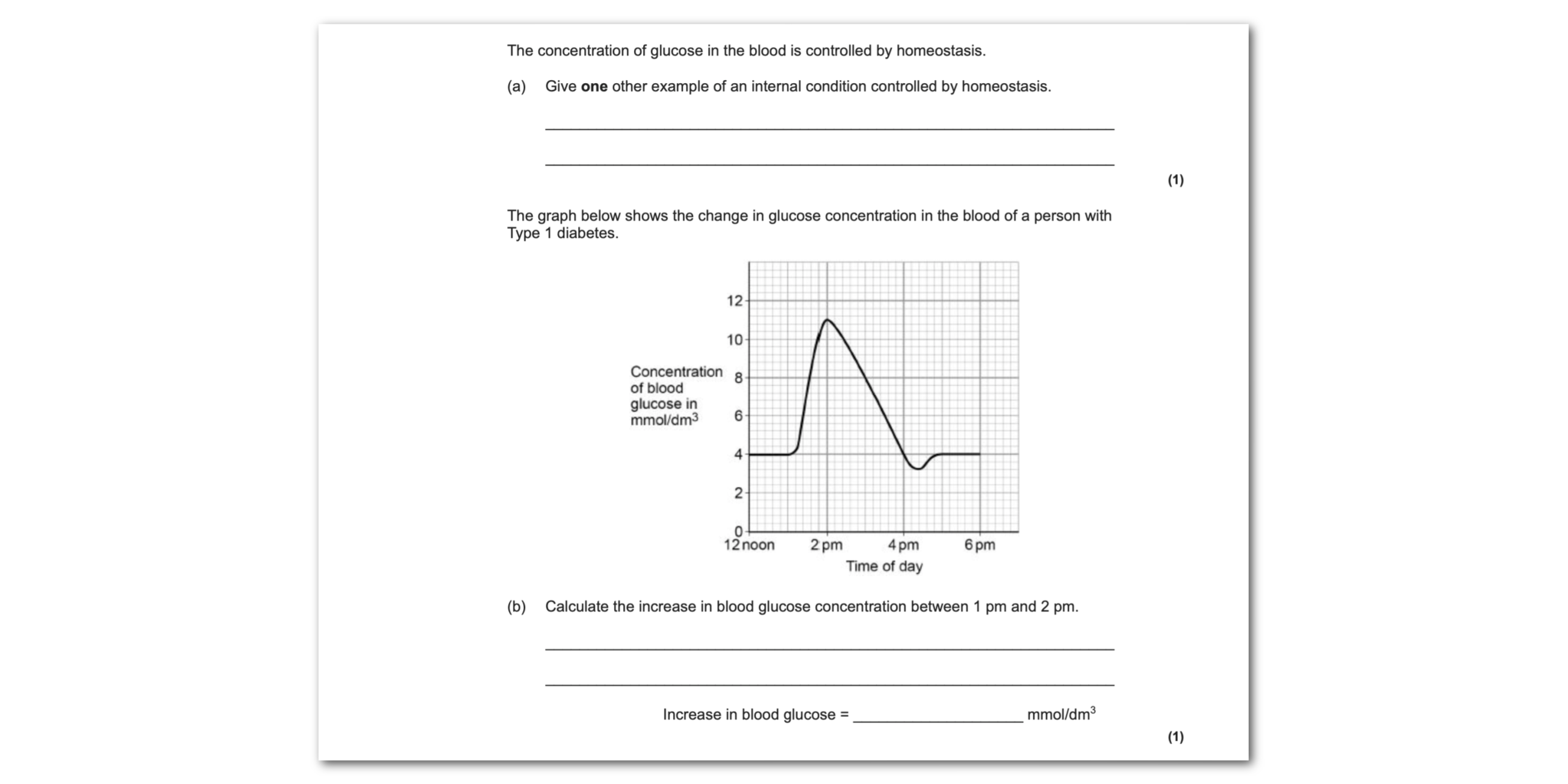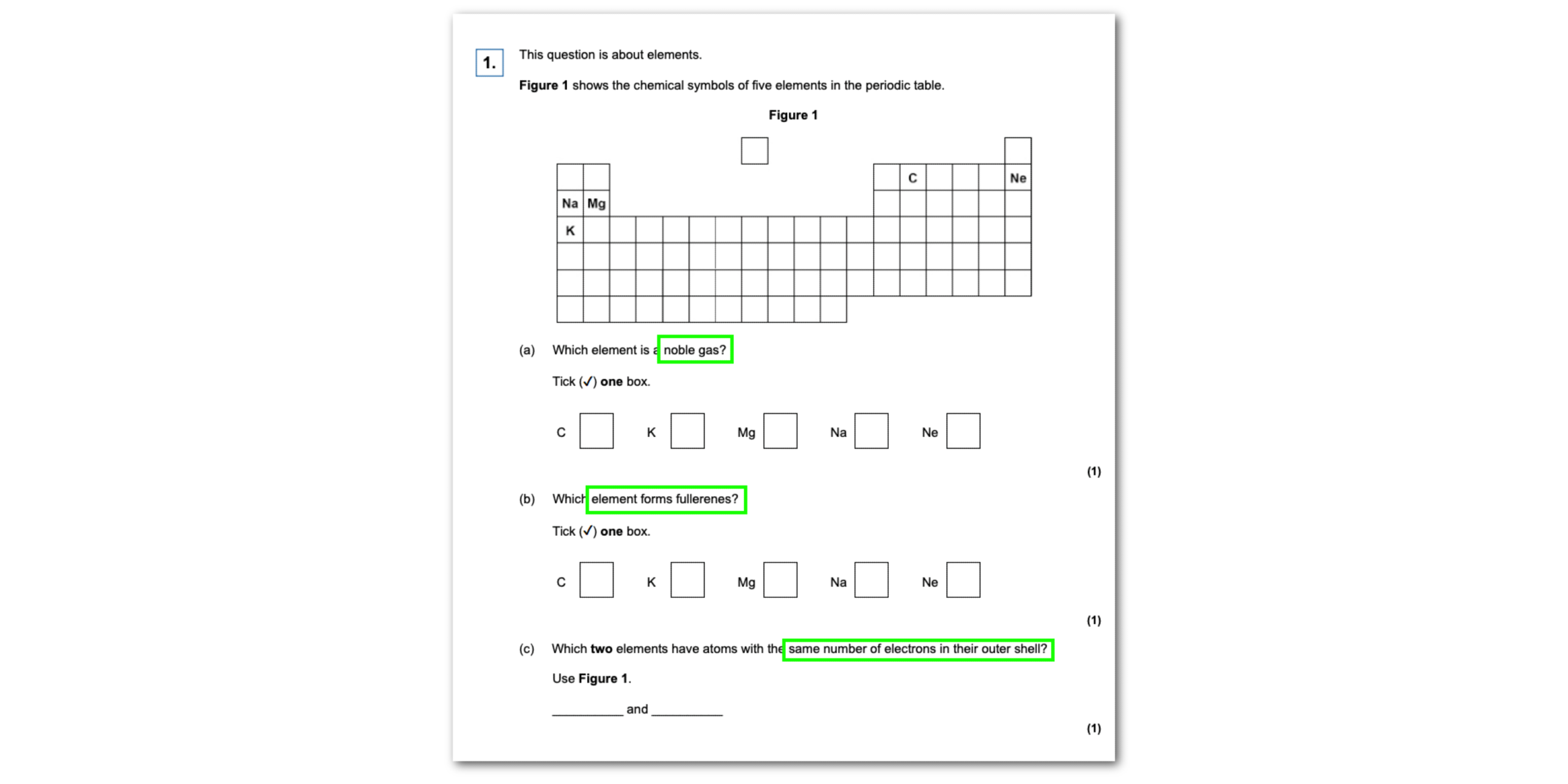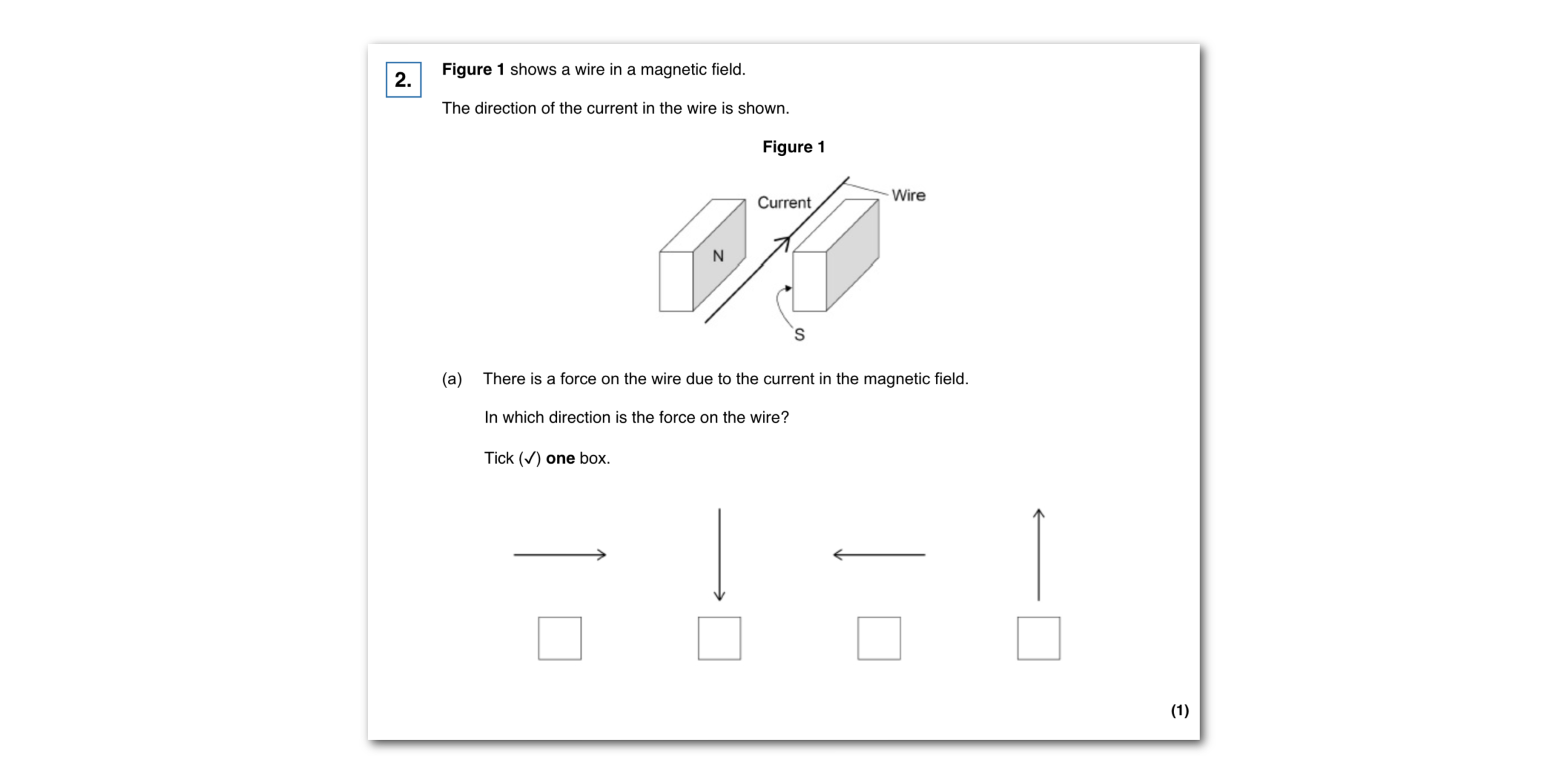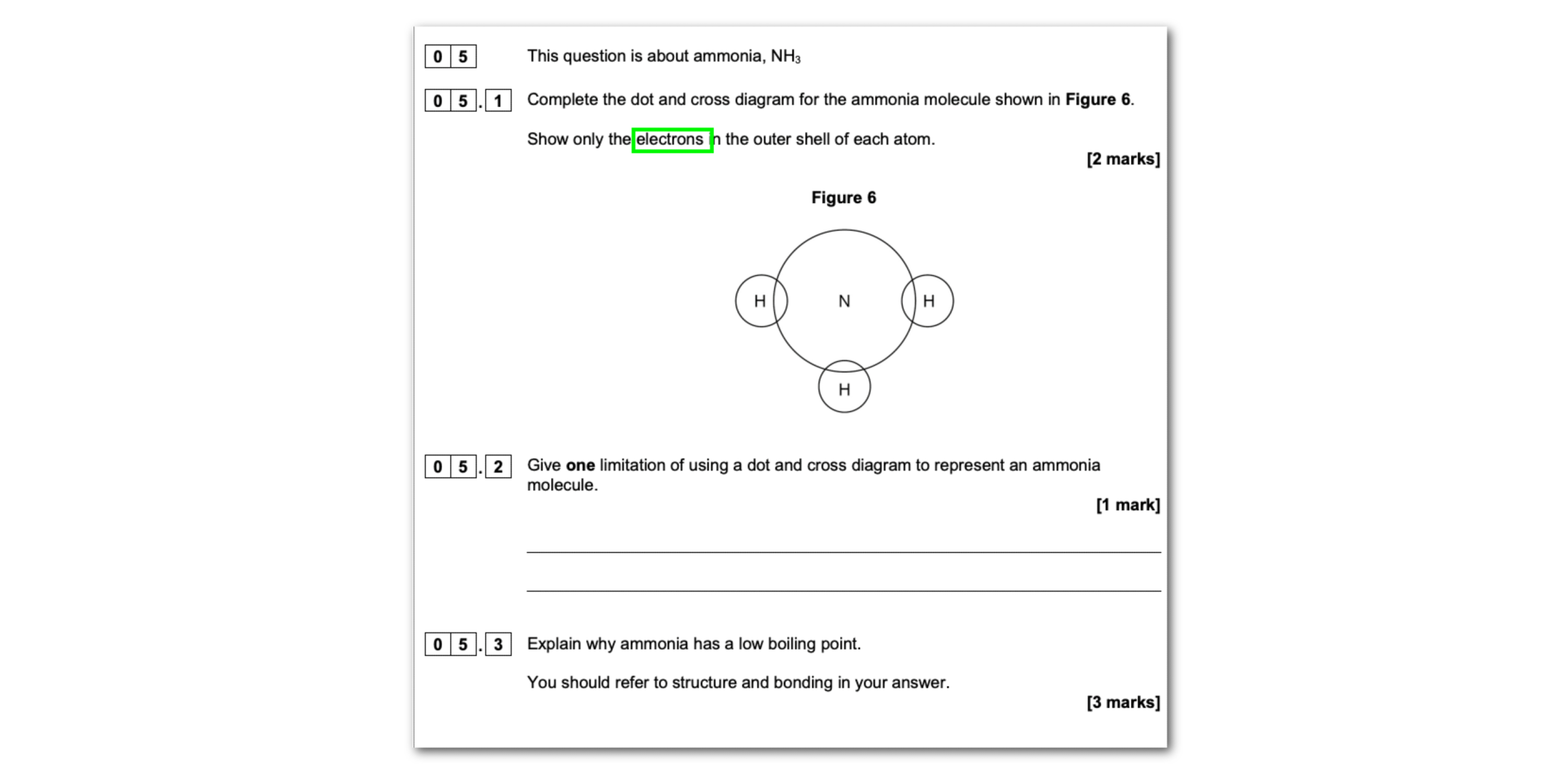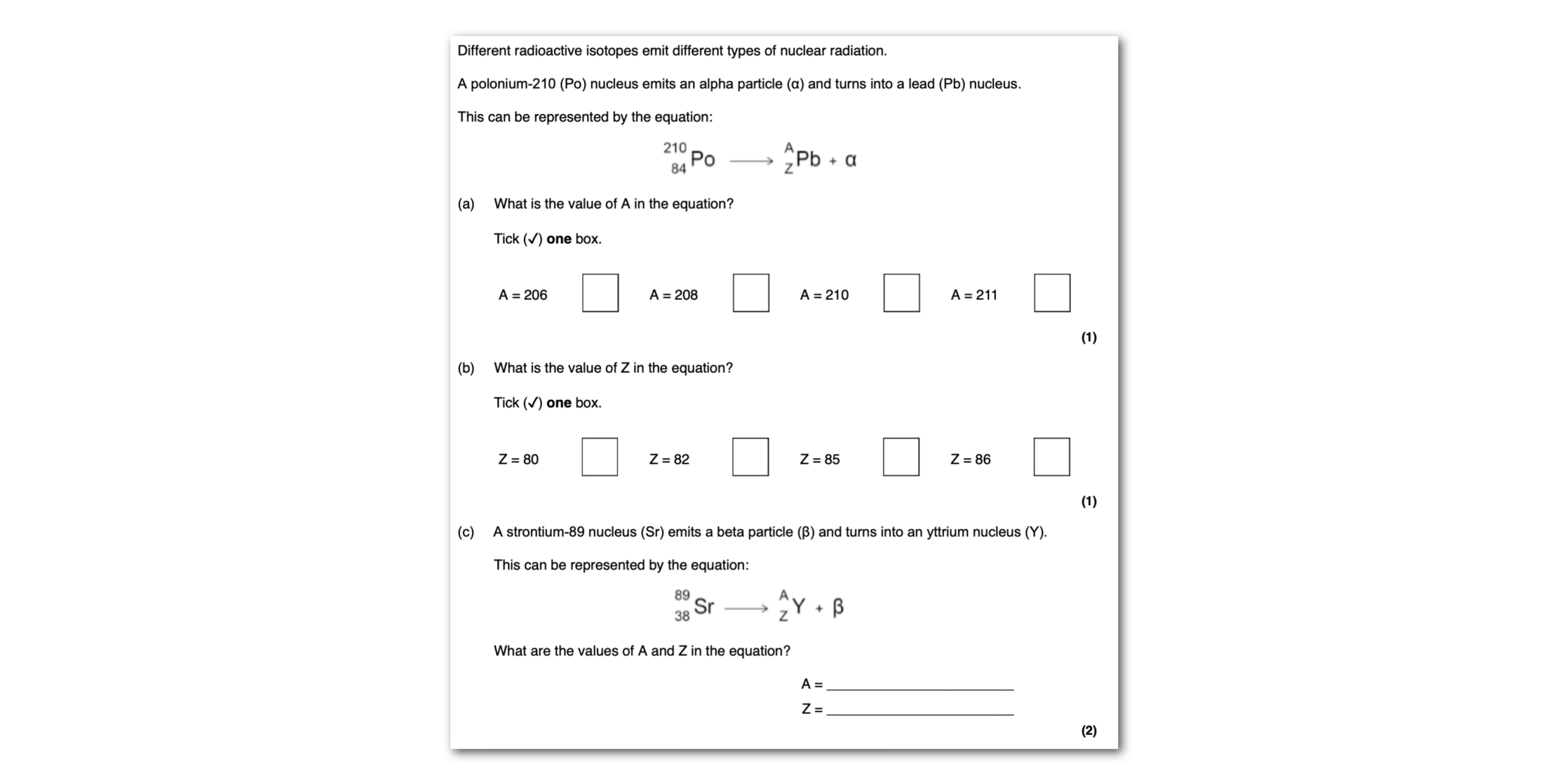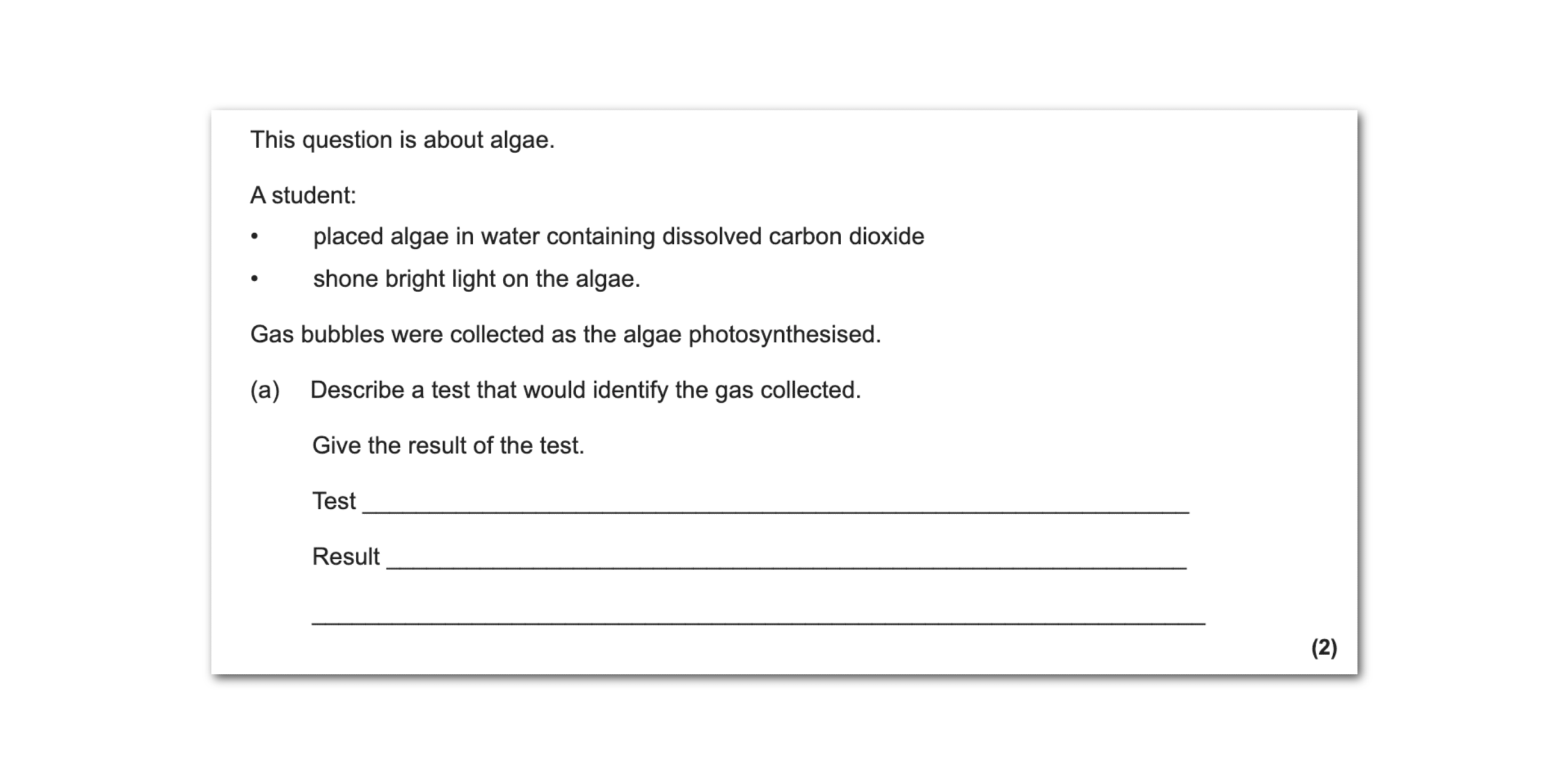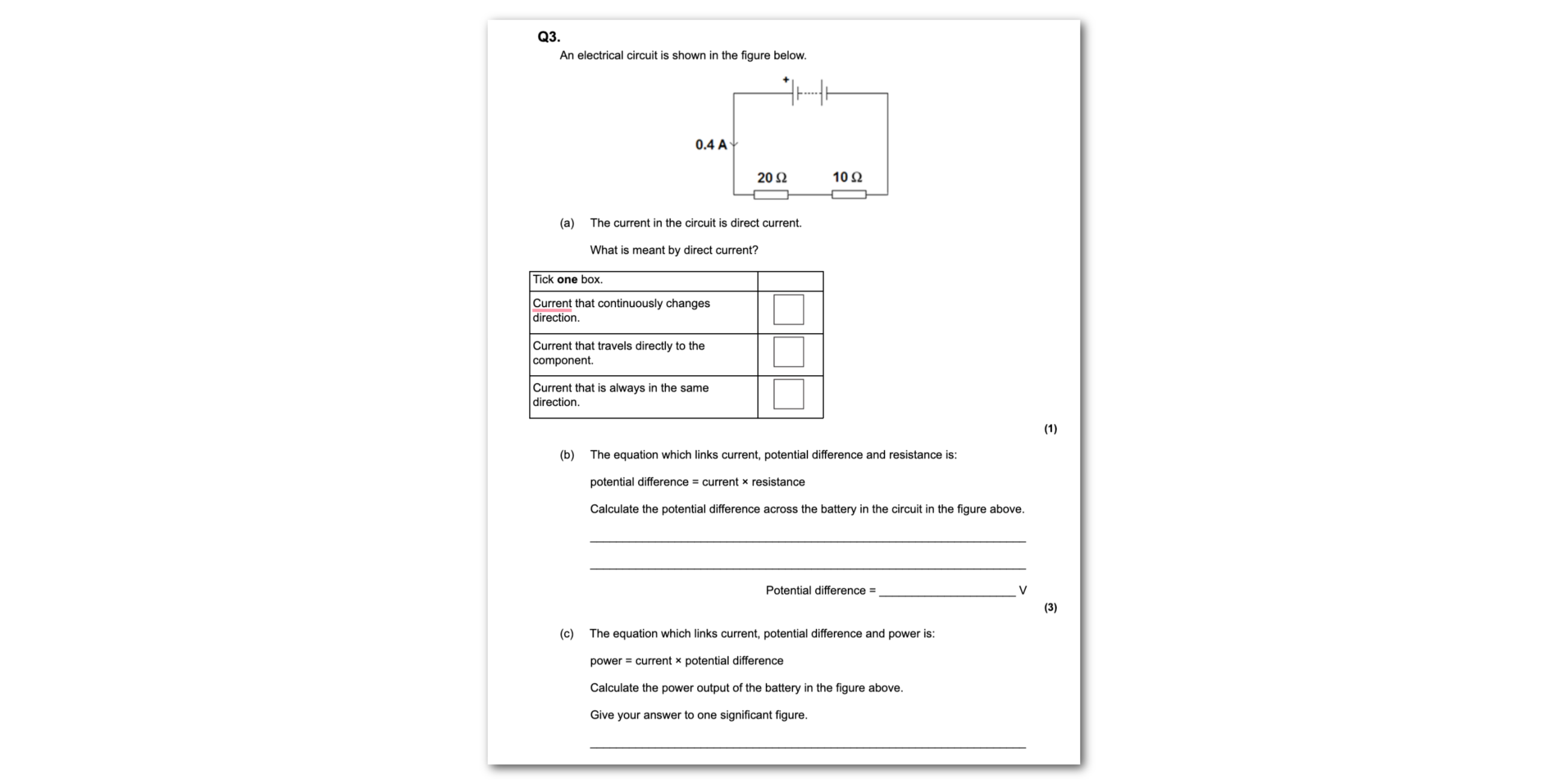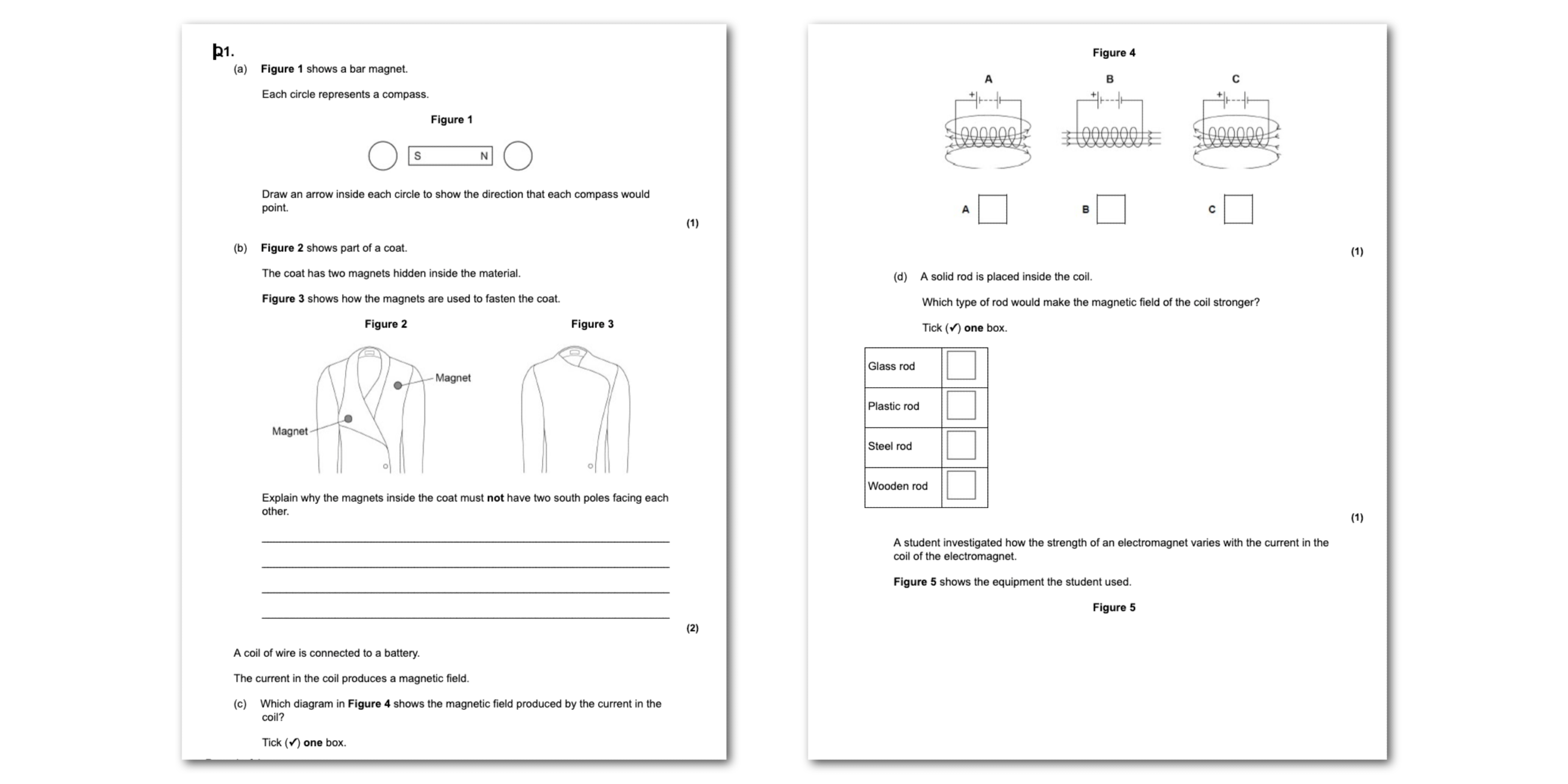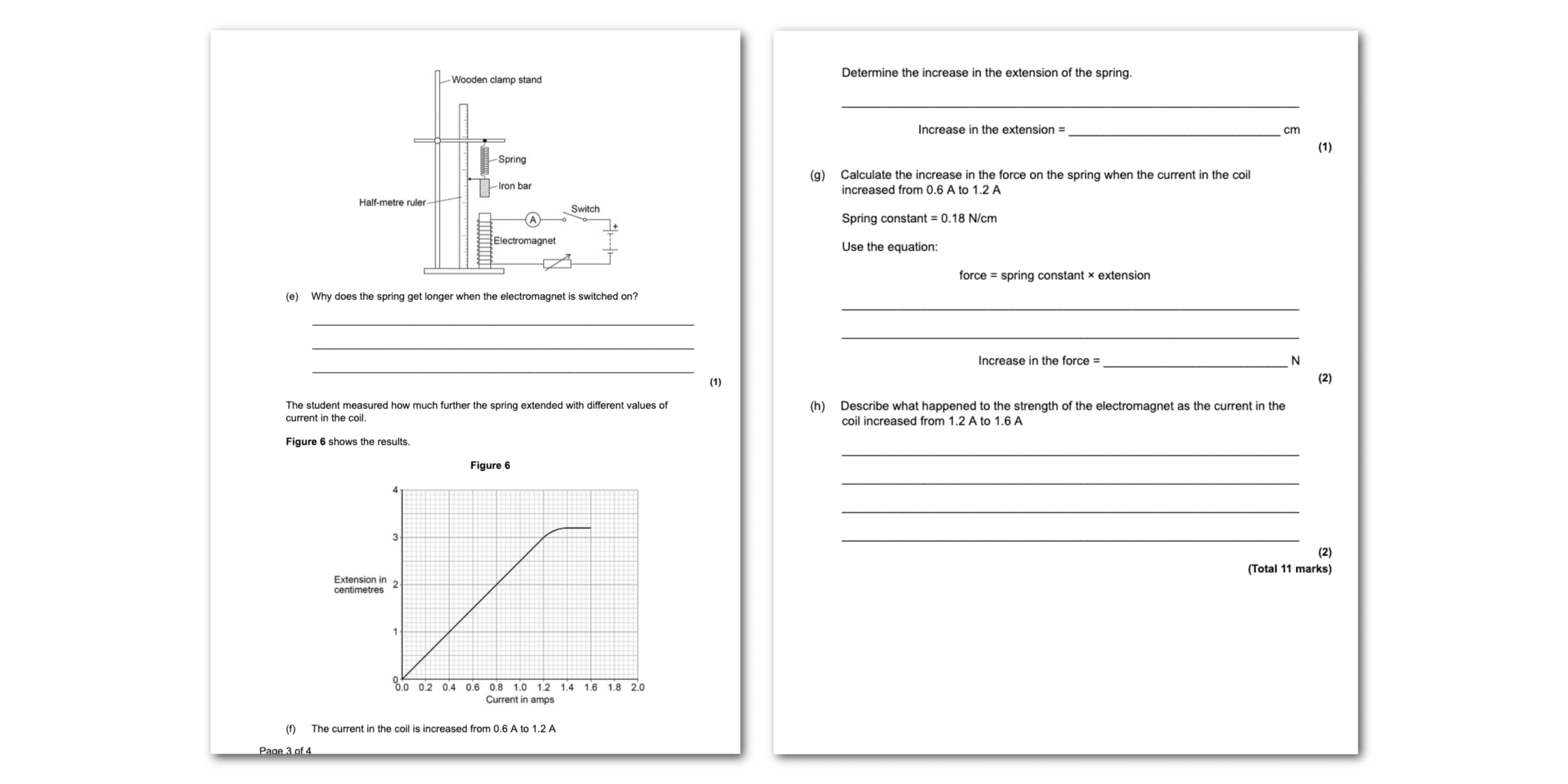Estimated reading time: 22 minutes
This blog post is based on our professional opinion after interpreting all the available information and is not endorsed by AQA.
On Monday 7th February, the exam boards released their advanced information materials (version 1.0) to help schools plan for the upcoming exam season.
Our fantastic team of experienced science teachers have analysed the information and produced spreadsheets (Combined and Separate) with colour-coded specification points to group them into major focus, minor focus and those that are not being assessed. This process has led to many discussions exploring whether or not the preceding specification points that are not being assessed can really be removed, as they are essential to understanding and helping students with more complex ideas.
Combined Science
Separate Sciences
The likelihood is that the unmentioned topics will feature in low-tariff questions - those that attract one or two marks, and linked content questions. However, whether or not the advance material refers to those topics that typically attract fewer marks is inconsistent across subject, tier and specification.
Linked content, or synoptic questions require students to use and apply knowledge, skills and understanding from multiple topic areas. It is these questions where minor focus (amber) topics may make up the majority of the question, with only a small part of the question assessing a major focus topic. Based on a past paper analysis previously carried out by our science team, we know that the mix of questions asked in exam papers is disproportionate across topics; any topics that are colour coded amber which typically feature in the exams, are strong contenders for linked and low-tariff questions.
Similarly, the advance information states that ‘practical skills, maths skills and Working Scientifically skills will occur throughout all papers’; many minor focus topics naturally lend themselves to the assessment of these skills. Therefore, it is a strong possibility that they will appear in the exam. Required practicals also provide obvious opportunities for the assessment of maths skills, and though AQA have listed those that are the major focus, students should perhaps be prepared for others to appear as low-tariff or linked questions.
At first glance, it may appear that the biology and physics exams have been made more accessible and little support has been provided for the chemistry exam, however upon closer examination of the minor focus points in both biology and physics, the apparent gains are not quite as straightforward as it seems.
Combined science
Biology
It is clear to see the units and specification points that will and will not be accessed, but it does then require running through the specification with a fine tooth comb to work out which topics might appear as low tariff or via ‘linked’ questions. For example, in paper 1 for both foundation and higher tiers, the specification points for eukaryotes and prokaryotes (4.1.1.1) and animal and plant cells (4.1.1) are not explicitly mentioned, but could be linked with questions on chromosomes, mitosis or stem cells, all of which come under the cell division topic (4.1.2), one of the areas of major focus.
Another example where this occurs is homeostasis (4.5.1) in paper 2. In both foundation and higher tiers, this topic is not explicitly mentioned, but hormonal control in humans (4.5.3) is an area of major focus and includes topics such as the human endocrine system (4.5.3.1) and control of blood glucose concentration (4.5.3.2). This past exam question is a great example of how these topics and concepts are very much linked and how students should be able to make the link between them:
The question above is a perfect segue into another important point that has been already raised: maths requirements and working scientifically. We must not overlook the fact that AQA are going to include these skills throughout the papers.
Potential Strategy
It is important to consider cross-over topics: topics that have been included in both foundation and higher tier papers. These include:
- 4.1.2 Cell division
- 4.2.2 Animal tissues, organs and organ systems.
- 4.4.1 Photosynthesis
It is possible that questions covering these topics might appear as higher demand questions/ questions at the end of the foundation paper. This means these topics are a good focus for a mixed ability class, where you might have some students sitting higher and some sitting foundation. For photosynthesis, however, the higher tier students will also need to revisit how limiting factors interact, inverse square law and importance of economics in enhancing conditions in greenhouses.
Chemistry
Although the major foci of the examination have been identified, care is needed because AQA have not removed any topics and, by its very nature, chemistry topics are extensively linked together. This is illustrated by the example below.
For this reason, all the content has been included as green because it is either fundamental knowledge or provides a context for the topics that will be assessed. The specification points that are contained within the major foci list provided by AQA have been made bold.
Common topics
The key takeaways as far as chemistry is concerned are:
- Students should have a good grasp of the meaning of technical terms, to aid their understanding of what is being asked.
- Students should have a good understanding of the electron arrangement of atoms and how this relates to reactivity trends and the number and type of bonds that elements form.
- Students should be able to confidently identify the bonding types and, those aiming to achieve a 5, can explain the properties of structures using their knowledge.
- Within electrolysis, students could be asked to provide the tests for common gases. This is also knowledge that could be assessed via biology questions related to photosynthesis or respiration.
- Sustainable development is included as a major focus which means that low tariff questions on the topic, from other spec points (5.10.2.1 and 5.10.2.2.), could be examined.
- Required practicals are likely to be the main focus that will provide the opportunity for students to use their maths skills, with the exception of the making salts practical.
Potential strategies:
Plan any revision materials by theme to help the students appreciate the need for them to use knowledge from more than one area.
For borderline students, target revision on the GREEN topics that have been made bold on the spreadsheet, showing our interpretation of the AQA Summer Examination Advanced Information. In particular, make sure that students are confident of the knowledge that underpins these ideas.
For the highest achieving students, it is important that they can apply what they know to situations with which they are unfamiliar. This could be as simple as the reactivity of an element lower down in a group of the periodic table or being told a structure type and then having to explain the properties it is likely to have.
Another potential strategy could come in the form of analysis. Upon inspection of the available paper 1 exams, we found a disproportionate amount of marks (52%) over the years had been assigned to just 2 topics: Atomic Structure & The Periodic Table (23%) and Chemical Changes (29%). Since we know that topic 4 is the largest of the topics, this may not necessarily come as a surprise. However, of the 29% of allocated marks to date for topic 4, 20% is specifically for acids and alkalis, leaving a large part of the topic only assessed at a much lower frequency. If you wanted to “play the game”, you could target these areas to secure understanding of these topics across all student abilities. This is not to say that they will turn up and, of course this is the risk you may take, but a secure knowledge of these topic areas which are very likely to be on the exam could certainly set borderline pupils up with a good fighting chance.
Physics
Although the major foci of the examination have been identified by AQA, care must be taken to work out which topics might appear as low tariff or ‘linked’ questions. Unfortunately, this is tricky to decipher and caution must be taken in planning as omitted topics might provide the foundational knowledge required to access topics that are a major focus. For example, the series and parallel circuits topic (6.2.2) is not assessed in the Paper 1 Higher exam, but this topic may provide the foundational knowledge required to access the questions assessed in required practical activity 16.
The following exam question is another good example. AQA have specified that Fleming’s left hand rule (6.7.2.2) and electric motors (6.7.2.3 ) is a major focus but permanent and induced magnetism, magnetic forces and fields will not be assessed, even though knowledge of magnetic fields is fundamental to answering the question below.
With this in mind, the attached spreadsheet is our interpretation of what teachers might want to consider for inclusion in their lesson and revision planning.
Common Topics:
Energy features heavily as either a major focus or an ‘amber’ in the Higher and Foundation Paper 1, which is unsurprising given the importance of the topic. Similarly in Paper 2, Forces (6.5) may be expected to feature significantly.
Questions to consider:
- Will a mixed ability class that have students taking the higher and foundation exam benefit from full coverage of common topics?
- Will classes benefit from full coverage, regardless of the AQA advanced information, to ensure that all concepts that weave throughout the course are understood?
- Is full coverage more beneficial for higher attaining students?
- Should lower attaining students focus on assessed topics only?
Triple science
Biology
The biology course has been torn up into tiny pieces with small spec points removed from larger topic areas. Although the guidance as to what is ‘in’ and ‘out’ is very clear, the areas assigned for ‘low tariff’ or ‘linked’ questions are difficult to navigate. View this spreadsheet to see our interpretation of the ‘red’, ‘amber’ and ‘green’ areas of the specification.
Some key thoughts to note from the higher tier guidance:
Common topics:
Our past paper analysis shows that 4.2 Organisation tends to get a lot of coverage—makes sense, right? It is a basis for a lot of other topics so makes good ‘low tariff’ or ‘linked’ questions. Perhaps keep an eye out for plant tissues and organs on the foundation paper, for example.
Beware the ‘amber’: it would be easy to forget about these areas as they are not explicitly listed in the guidance. We have looked at these ‘conspicuously absent’ areas of the guidance and have come up with a few ideas:
1. Plant diseases are not explicitly mentioned in the guidance, but could make nice linked/low tariff questions for the Infection and Response topics (4.3).
2. Photosynthesis is another topic conspicuous by its absence in paper 1 for higher tier. However, it could easily be linked to questions on cells, cell transport and levels of organisation.
3. Aerobic respiration could be linked with many areas as well, including questions on mitochondria and cell structure.
4. Metabolism isn't mentioned either, but makes a great link with respiration and digestion topics.
5. Waste management, land use, food security, global warming, transfer of biomass all make great links to other topics, particularly those under organisation of an ecosystem (4.7.2).
Potential strategies: A good strategy could be to look for examples of these questions with linked content, model these ideas to students, and then check the spreadsheet for other potential linked content.
For borderline students, target revision on the GREEN topics with a nod to the links we have highlighted in the spreadsheet to AMBER topics.
For the highest achieving students, you could get them to identify more of these potential links and model these ideas to each other.
Chemistry
Some key thoughts to note from the guidance:
No Amber: The elephant in the room for chemistry is that very few topics are listed to not be assessed across both foundation and higher papers. Some topics were included as major focus, but many were unmentioned, leaving students and teachers confused about whether they should revise these topics at all. We have listed some of the main contradictions in the chemistry guidance below:
1. Higher paper
a. General topics about atoms, elements, electronic structure (4.1.1) were unmentioned but will form the basis of many questions on periodic table, structure and bonding.
b. They are also needed to allow for assessment of nuclear decay in physics. Although the aforementioned topics are not listed in higher, without this fundamental knowledge of the structure of the atom, attempting questions like the one below would be impossible.
c. None of the spec points for the ‘recall of chemical tests to identify ions’ (4.8.3) are listed as a major focus, yet for required practical 7, students need to be able to do just that. (This theme continues across other practicals that are included in foundation and higher, where the main spec point is not listed, but questions about the practical will come up).
2. Foundation paper
a. Essentially the whole of topic 3 (4.3.1) is unmentioned; as concentration, relative formula mass, balanced equations, to name a few, are fundamental concepts and as maths skills that feature across most other units, they are almost guaranteed to be included.
b. Unlike the HT paper, all gas tests have been identified as topics that will not be assessed. However, even this clarity is slightly misleading. Due to the nature of chemistry as a bridging science, these topics cannot simply be discarded as they may be required in Biology: for example, to test a gas produced during respiration or photosynthesis. Indeed, if you look at the past question below, you can see the importance of understanding precisely what can, and more importantly cannot, be removed from teaching.
Potential strategies:
- Plan any revision materials by theme to help the students appreciate the need for them to use knowledge from more than one area. There are many examples on Exampro and past papers which show this is common practice for exams.
- For borderline students, make sure that the fundamental ideas - particularly those related to atomic structure and how these ideas can be used in other topics - are as embedded as possible.
- For the highest achieving students, give them the opportunity to apply what they know to situations that they are unfamiliar with.
- “Play the game” by identifying the common topic areas assessed year after year by the exam boards and ensure pupils have the secure knowledge needed to score highly on these areas.
- For challenge and stretch of the more able cohorts, look at the areas which are the main focus for higher but not foundation. You may be able to assume that these are the areas you want your Grade 8/9 pupils to focus on to allow for stretch and challenge towards those top marks.
Physics
In physics, understanding the details of what is ‘in’ and ‘out’ becomes more of a challenge when looking at how ideas are built within the subject. The key ideas from the initial inspection of this document are:
1. Whilst some topics have been omitted, there is still quite a lot of content that will be used in the lower tariff or linked questions that will be part of the scaffolding process in a question.
2. Other topics that are ‘not assessed’ could be removed from future teaching plans. There are certain concepts that are essential to understanding more complex ideas.
Common topics
The information regarding paper 1 suggests that the main focus will be Energy Changes and the calculations involved with energy transfers.
The concern is that 4.2.4 ‘energy transfers that calculates electrical power’ and ‘energy using charge, potential difference and current’ is assessed. However, given that 4.2.1, 4.2.2, and 4.2.3 is ‘not assessed’, the question to ask is whether or not this information is essential to being able to interpret questions that deal with these concepts.
This question looks at series circuits, current and resistance, with the final calculation calculating power. Without covering 4.2.1, 4.2.2, and 4.2.3, students will find it hard to access these questions, especially when coming across it in their revision process.
Paper 2 has similar problems where you have to be aware of the amber questions, as highlighted in our spreadsheet.
Magnetism is not mentioned as a major focus, but 4.7.1 permanent and induced magnetism is. However, the other sections of the specification that look at magnetism would be considered to be an amber topic. As a teacher, the dilemma is understanding how a student can be expected to discuss magnetic fields around a wire, when the subject content for magnetic field has not been covered.
This question brings together many concepts of magnetism, which without exploring the fundamentals of magnetism would be difficult to complete.
Moving Forward
The advanced information is a useful tool. However, during the analysis and planning process, it was not a simple case of just colour coding these specification points. The wider implications for teaching and how this applies to examination questions needs greater consideration.
Read our other blog posts on GCSE maths, science and English exam updates here.
Not a CENTURY user? Book a demo to find out how CENTURY can help your students to get exam ready this year.


